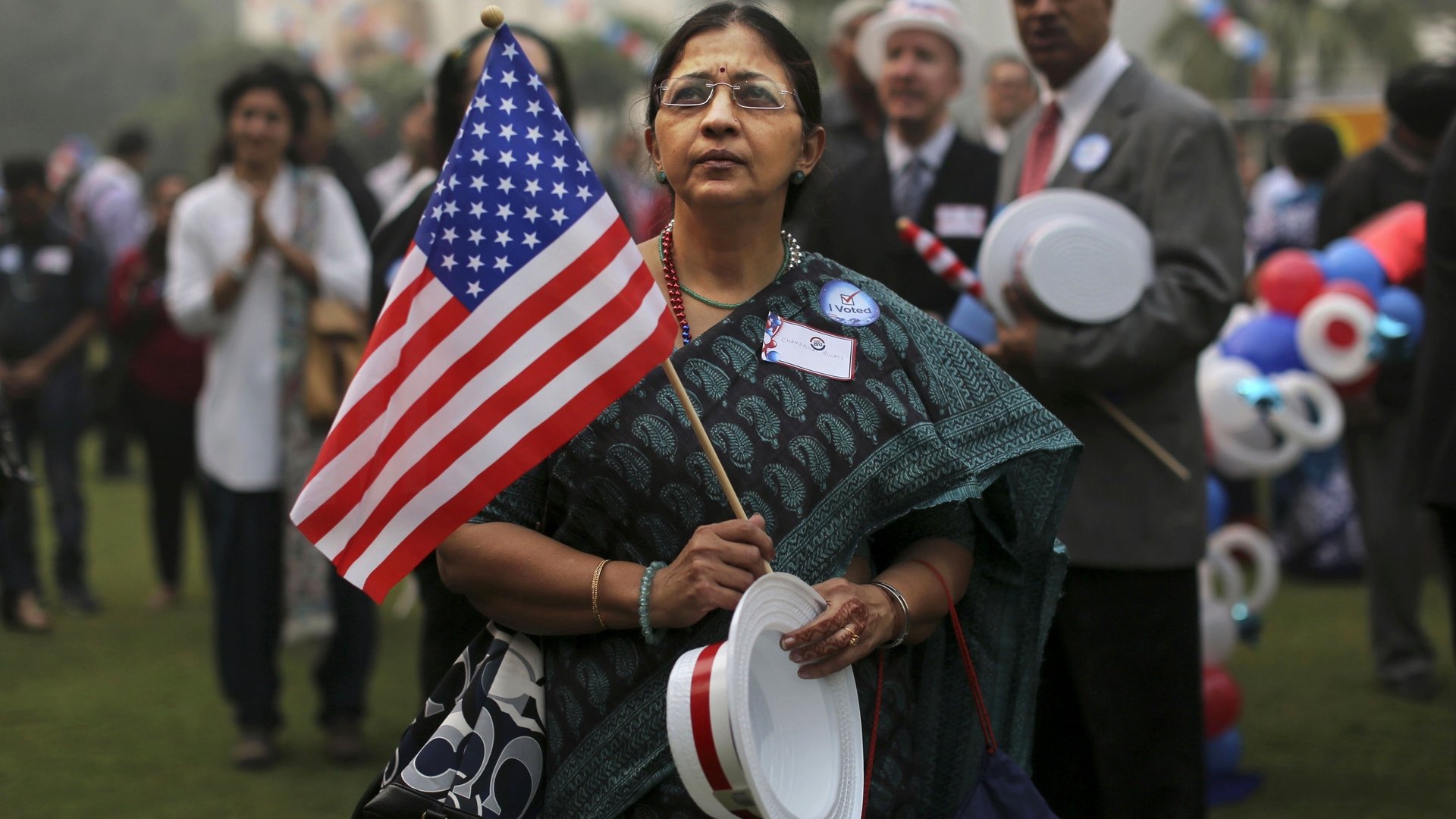Who has it worse than H-1B workers in Trump’s America? Their spouses
For spouses of H-1B workers, one step forward under the Obama administration could become two steps back under president Donald Trump.


For spouses of H-1B workers, one step forward under the Obama administration could become two steps back under president Donald Trump.
Until two years ago, husbands and wives of foreign workers in the US could not join the workforce. Aside from staying home or finding an employer willing to sponsor their own H-1B visa, they only had two choices: go back to school or volunteer. Not the best of options for single-income households.
“It’s like you’re outside a candy shop, and you can’t indulge in it,” Suhas Khamgaonkar, a native of India who came to the US when her husband was granted an H-1B, told the Chicago Tribune in 2015. “You can’t avail of those opportunities, and you can’t enrich yourself. And that is the bane of H-4. That is the worst kind of visa.”
After much lobbying, a 2015 regulation allowed some holders of H-4 visas, granted to spouses of H-1B holders employed in specialty occupations, to apply for work authorization. (Only those whose spouses were awaiting green-card approval were eligible.) Most H-4 holders belong to the South Asian diaspora. In 2015, nearly 80% of the 125,000 H4 visa holders had Indian passports. An overwhelming majority—90%—were female.
Now the work permit for spouses is on the table for reworking by the Trump administration.
An April 2015 lawsuit challenging the rule, filed by “Save Jobs USA”—a group of computer-industry workers who said they had been replaced by foreign-born employees —was recently taken up in the US Court of Appeals for the District of Columbia Circuit. Immigration Voice, an advocacy group for legal, high-skilled immigrants, reports that Save Jobs USA argues that adding H-4 workers further increases competition for US job seekers. Last month, the government asked for a 60-day pause to allow the new administration to assess the case.
Since then, H-4 visa holders have been given only more reason to worry.
The backdrop of fear
Much of the anxiety about the right to work stems from the increasing volume of anti-immigrant rhetoric and action in the US.
In the year leading up to the 2016 elections, the social-justice advocacy group South Asian Americans Leading Together (SAALT) documented 207 incidents of hate violence and xenophobic rhetoric aimed at South Asian, Muslim, Sikh, Hindu, Arab, and Middle Eastern people in the US. That was a 34% increase from the three years between 2011 and 2014. Recent shootings targeting persons of Indian origin in Kansas and Washington state put a new focus on such violence.
Policy changes have been equally wintry: India’s $150-billion IT industry had its fears of rising protectionism stoked with the Trump administration’s temporary suspension of premium processing for H-1Bs. The industry contracts out thousands of employees who need visas to work in the US and gets more than 60% of its revenue from American operations.
Advocates see the move to further restrict the entry of foreign workers as a signal that the H-4 work authorization could also be under attack. US attorney general Jeff Sessions has called the more liberalized rule a “change…that hurts American workers.”
“This continues to be part of this administration’s larger attack on immigrant communities with the underlying assumption that immigrants are taking jobs rather than being valued and protected for their immense contributions to this nation,” Lakshmi Sridaran, director of national policy and advocacy at SAALT, told Quartz. A repeal of H-4 work authorizations would be “a devastating setback,” she said.
Dashing long-term hopes
The H-4 provision has the potential to boost immigrants’ economic contributions to the US over a significant amount of time. That’s because it only benefits couples who intend to reside in the US in the long term, with one spouse in the midst of the green-card process.
“They should be open-minded because this is the land of immigrants,” Rashi Bhatnagar, a former journalist from India who started the page H4 visa, a curse, told Quartz. “If they don’t want to welcome high-skilled workers, they should stop the visas [altogether] but they should treat spouses with dignity.”
When both spouses work, the American economy stands to win, too. ”They are paying taxes, they’ve started buying houses, buying cars. A lot of them have started businesses as well,” says Bhatnagar. “They’re trying to expand it, and they’re planning to hire US citizens as well.”
The US boasts legions of immigrant startup founders and is home to the largest number of immigrant investors. Shutting out foreign talent could literally affect the country’s health. Sudarshana Sengupta, a biomedical researcher for the last 13 years in the US, has been associated with research at Harvard and the University of Chicago. Immigration Voice reports that she is launching her own startup aimed at developing cancer immunotherapy strategies—a plan that will be stopped in its tracks if her H-4 work authorization is taken away.
“It’s all about equality,” says Bhatnagar, “If L-2 people can work, the dependents of refugee visa holders, then why can’t H-4 people work?”
The question has implications beyond US borders. Restrictions on H-4 holders even limit work they can do for employers outside the US.
Swati Arun, who hesitantly made the move to America from Kolkata, India, with her techie husband in February 2016, knew she’d have no luck working in the US. He hasn’t started the green-card process. She took on some freelance assignments from a Bangalore-based publication. However, she eventually had to refuse the gig.
US laws that bar H-4 holders from vying for American jobs also block them from working remotely for non-US companies. “I’m ready to pay the taxes,” says Arun, adding, “It’s like career suicide if you’re coming to the US.”